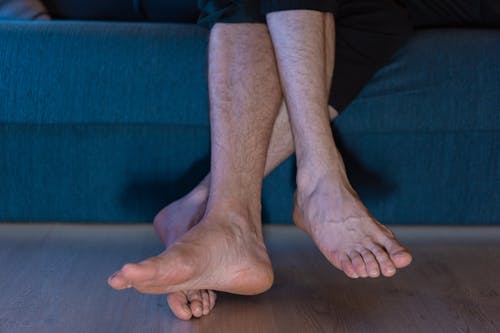Restless leg syndrome has gone through the roof with the onset of the pandemic.
Benjamin Wipper of Harvard Medical School and his colleagues recently found that restless legs syndrome (RLS) in the United States has increased in severity since the onset of COVID pandemic. His team pulled data from 500 participants in the National Restless Legs Syndrome Opioid Registry. Their findings were outlined a study published in Sleep Medicine.
Individuals with restless legs syndrome have difficulty falling asleep, excessive daytime sleepiness, sleep deprivation, or sleep disturbances, WebMD reports. They also commonly experience pain including a charley horse, and uncomfortable tingling and burning sensations. Those who suffer from RLS can also experience mental health symptoms including depression, anxiety, and panic attacks.
“Considering the link between RLS and psychiatric illness, it has been speculated that there may have been increases in RLS symptom severity alongside the recent rise in depression and anxiety, but this association has not been explored,” the authors of the current study noted.

The participants in the National RLS Opioid Registry agreed to be involved in a longitudinal observational study in which they reported RLS symptom severity before and during the COVID-19 pandemic at six-month intervals. Their responses were collected in January and February 2020, April and May 2020, September 2020 through February 2021, and March 2021 through June 2021. Symptoms were assessed using the International Restless Legs Syndrome Study Group severity scale (IRLS), the Insomnia Severity Index (ISI), the General Anxiety Disorder-7 scale (GAD-7), and the Patient Health Questionnaire (PHQ-9).
The team reported that “153 participants completed surveys during January and February 2020, and 155 completed surveys during April and May 2020. Baseline characteristics were similar for all participants.” Furthermore, “In a between-subjects analysis for these time periods, symptom scores on the IRLS were significantly higher in January/February 2020; participants were approximately twice as likely to have IRLS scores of 20 or higher compared to April/May 2020 (37.7% vs. 20.9%).”
“Changes in IRLS were also significantly correlated with changes in both PHQ-9 and GAD-7 scores, providing further support for the associations of RLS to both depression and anxiety,” the researchers wrote. “Notably, individuals who completed surveys in January and February 2020 did not see increases in RLS severity or other mental health questionnaire values on subsequent six-month surveys completed during the pandemic or on the following iteration of surveys 1 year later. We suspect that these findings may be at least partially related to the timing of the surveys.” They added, “Six-month survey data for most patients were collected during a decline in cases and hospitalizations, and 1-year data in early 2021 may have reflected optimism with the availability of vaccines.”
They findings were limited by “the observational design, which prevented conclusions about causality, and the lack of data on the effect of COVID-19 infection on RLS symptoms.” This means that more research on the topic is warranted.
“These data suggest that clinicians should attend to RLS symptoms during the current pandemic and in future instances of socioeconomic and/or political uncertainty. Future studies need to confirm these findings in other populations of patients with RLS,” the team concluded.
Sources:
Restless Legs Syndrome Surged Early During COVID Pandemic
Restless legs syndrome severity in the National RLS Opioid Registry during the COVID-19 pandemic

Join the conversation!